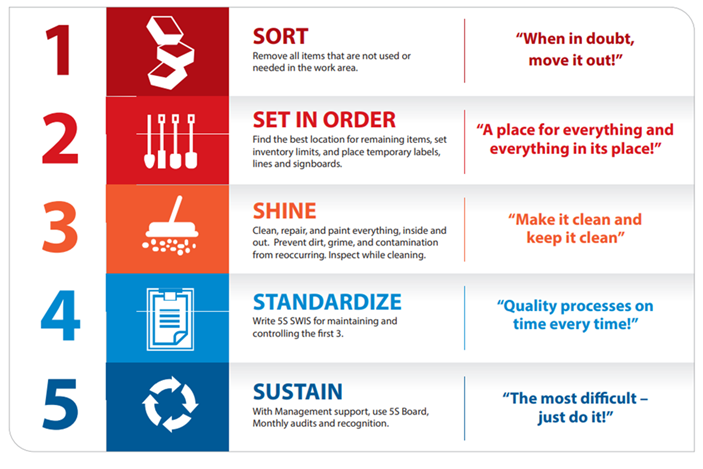Introduction
Organizational management is a complex process that includes the management of work processes, organization of production, jobs, and talent. Workplace organization can occur at the macro and micro levels and is a popular topic among small and medium-sized businesses today (“Workplace organization,” n.d.). Therefore, today, attention to tools, methods, and approaches to micro- and macro-organization of the workspace remains high. This paper aims to describe the concept of micro-organization within the workplace.
The Importance of the Workspace
The workspace is the basis of the employees’ personal space, and that is why it is important. Most CEOs and top managers underestimate this element and lose out to competitors if workspace issues remain unresolved (“Macro and micro-organizing,” n.d.). Approaches such as the 5S principle allow for getting a general understanding of the basics of order in the workplace. Automated problem-solving and subsequent monitoring is possible using special software such as SpaceIQ and other applications.
5s Principle
The 5s principle was first introduced in Japan and is an abbreviation for five verbs – sort, set in order, shine, standardize, and sustain. Sorting means removing all the clutter, setting in order means finding the best place for inventory, and shining means repairing and cleaning all the workplace elements. Then, standardizing implies creating labels for everything to smooth up the perception, and sustaining is the monthly monitoring of the workplace elements’ organization.

Automation of Processes
Automation of processes today is not only possible but also the most desirable solution for most organizational problems, as it offers the implementation of systemic approaches. The organization of the workplace can be scaled to the macro level, which is further inextricably linked with the micro level. The macro level includes the total area of the premises, zoning of the space, choice of furniture, and planning of office moves, while the micro level is focused only on the personal workplace. The Space IQ program offers an automated solution to the mentioned problems and further monitoring (Livnat, 2022). Monitoring is needed at both macro and micro levels as workplaces undergo gradual changes. For example, workers may clutter their desks with new documents and other small things, and equipment may fail and wear out in factories.
Effects
The consequences of a better micro-organization of workplaces are difficult to overestimate. Improved organization can contribute to a more intense integration of employees and their involvement in work. Integration, in turn, is associated with increased innovation and job satisfaction (Brimhall & Barak, 2018). These factors directly affect the success of the business, as high indicators of employee retention are associated with a decrease in the costs of hiring and training personnel. Staff training costs are usually significant, while the efficiency of more experienced workers can be 20-30% higher than that of newcomers. Therefore, companies direct resources to ensure organizational stability, including through the micro-organization of the workspace.
Conclusion
Thus, the concept of micro-organization within the workplace was described. Micro-organization is necessary as it allows for the reduction of the negative effects of entropy on the employees, which improves motivation and job satisfaction. There are various tools for the micro-organization of workplaces, such as the 5s approach which involves constant improvement of the workplace through sorting, setting in order, shining, standardizing, and sustaining. At the same time, automation tools such as Space IQ allow for systematizing the process and maintaining an adequate level of micro-organization in the workplace.
References
Brimhall, K. C., & Mor Barak, M. E. (2018). The critical role of workplace inclusion in fostering innovation, job satisfaction, and quality of care in a diverse human service organization. Human Service Organizations: Management, Leadership & Governance, 42(5), 474-492.
5s workplace organization and visual controls training (2022). Web.
Livnat, N. (2022). SpaceIQ. Web.
Macro and micro-organizing – what you need to know (n.d.). Me In Order. Web.
Workplace organization(n.d.). BDC. Web.